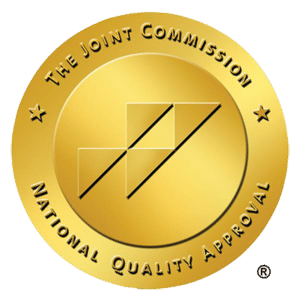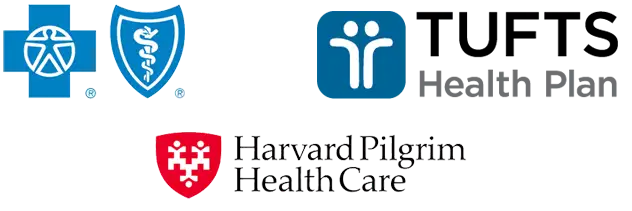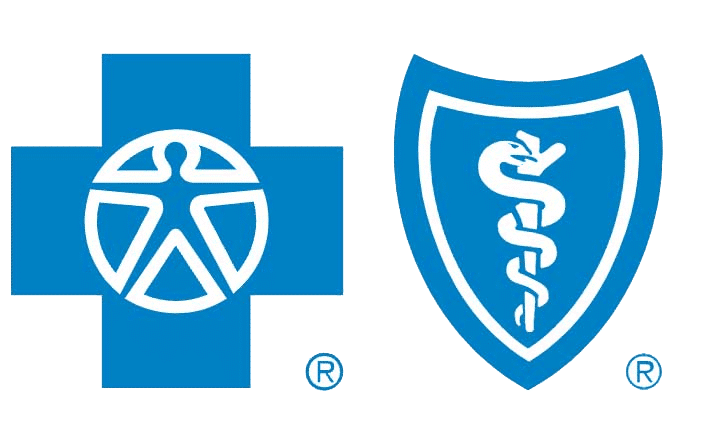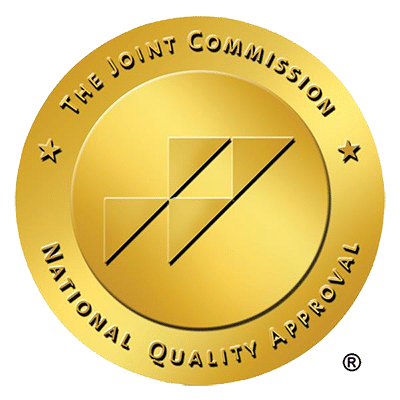If you’re searching for answers on cocaine withdrawal, you’re likely grappling with questions about the symptoms and the recovery process. This article cuts through the uncertainty, providing a straightforward guide on the phases of withdrawal, identifying symptoms, and practical advice for managing this difficult transition. Equip yourself with knowledge on what to expect, how long it might last, and the steps to take for a smoother path to sobriety.
Key Takeaways
- Cocaine withdrawal symptoms can emerge within 24 hours after the last dose, with peak symptoms occurring around 24-72 hours following last use, and may vary from physical manifestations like fatigue to psychological ones such as depression and anxiety.
- Safe management of cocaine withdrawal typically involves medically supervised detox to minimize discomfort and reduce relapse risk, with the choice between inpatient and outpatient detox depending on the severity of symptoms and individual circumstances.
- Treatment for cocaine addiction extends beyond detox with programs incorporating behavioral therapies, support groups, and comprehensive care plans to prevent relapse, improve coping strategies, and maintain long-term recovery.
Understanding Cocaine Withdrawal
Withdrawal from cocaine initiates when the brain, which has adapted to elevated dopamine levels due to consistent use of cocaine, suddenly encounters a substantial reduction in these levels. This decrease throws off the equilibrium of neurotransmitters and triggers symptoms associated with withdrawal.
As this imbalance occurs, an individual’s dependence on cocaine grows because the brain strives to regain its normal state. The recurring cycle where increased tolerance necessitates consuming larger amounts of cocaine just to achieve similar effects is indicative of developing dependency on the substance.
What Causes Cocaine Withdrawal?
The abuse of cocaine disrupts the dopamine transporter protein’s regular activity, leading to an accumulation of dopamine and thus overstimulating neuronal cells. This increase in dopamine levels is particularly pronounced in the nucleus accumbens, a brain area linked with pleasure, resulting in a powerful sensation of bliss.
As tolerance builds up, withdrawal symptoms emerge that lead individuals to consume increasing amounts of cocaine. Consequently, this pattern perpetuates itself – escalating usage fuels withdrawal which then prompts even greater use. This relentless cycle forms a trap from which escaping becomes increasingly challenging for those addicted to cocaine.
The Physiology of Cocaine Withdrawal
Persistent use of cocaine doesn’t only alter the function of neurotransmitters, but also affects genetic expression. This results in a build-up of FosB within the nucleus accumbens, a change that is linked with behaviors typical of addiction.
The elevated presence of FosB intensifies both the urge to consume more cocaine and drug-seeking actions, indicating its crucial role in creating lasting modifications in neuronal structure. Such biological transformations highlight the difficulties faced during withdrawal from cocaine and underscore why professional assistance is essential when attempting to conquer this stage.
Recognizing Cocaine Withdrawal Symptoms
Recognizing the symptoms of cocaine withdrawal is an essential part of understanding the withdrawal journey. These symptoms manifest both psychologically, with conditions like depression, and physically, through signs such as heightened sleep needs and a greater appetite.
It’s important to note that the withdrawal symptoms from cocaine can vary significantly from person to person. This variability stems from each individual’s unique biochemistry, mental health status, and their particular habits associated with cocaine use.
Physical Symptoms
Individuals experiencing withdrawal from cocaine may exhibit a variety of physical symptoms. Some of the most frequent physical manifestations include:
- A profound sense of tiredness
- Issues with sleep patterns
- Overwhelming weariness
- General bodily discomfort
- Shaking or tremors
- Experiencing cold spells
- Pain in the muscles
These indicators are reflective of how the body is reacting to not having access to cocaine.
It’s important to note that while signs such as those seen during heroin or alcohol detoxification may be absent—since cocaine withdrawal often does not present with obvious physical symptoms—the experience can still be quite severe and should not be underestimated.
Psychological Symptoms
Experiencing psychological symptoms is a common aspect of withdrawing from cocaine. Individuals may encounter depression, characterized by an enduring sense of sadness and a diminished interest in previously enjoyed activities, which can intensify to include suicidal thoughts for some during the withdrawal phase.
To these concerns, individuals undergoing cocaine withdrawal might also experience:
- Anxiety
- Paranoia, involving heightened fear and suspicion
- A strong desire for more cocaine
- Agitation
- Problems with focusing their attention
These extended or protracted withdrawal symptoms present considerable mental hurdles throughout the process of cocaine cessation.
Want to Learn More about Cocaine Withdrawal?
Our addiction recovery team is here 24/7 to answer your questions or to get you help.
The Cocaine Withdrawal Timeline: What to Expect
Typically, the process of cocaine withdrawal unfolds in a three-phase sequence.
- Within 24 hours post-final dose, symptoms can emerge.
- These symptoms reach their highest intensity between one to three days after last usage.
- Over the ensuing weeks, there is a gradual diminution of these symptoms.
It’s important to recognize that this timeline can differ from person to person.
At the onset of withdrawal during phase one, individuals might experience signs such as:
- powerful urges for cocaine
- heightened anxiety
- depressive moods
- changes in hunger levels
- increased irritability
- lethargy
- reduced drive or enthusiasm
Given that these manifestations may persist anywhere from several days up to half a year illustrates why there’s an essential need for detailed addiction treatment strategies.
Factors Influencing Withdrawal Duration and Severity
The duration and intensity of withdrawal symptoms from cocaine can vary based on a number of determinants such as:
- How long and how often the individual has used cocaine
- The quality or strength of the drug
- How it was consumed by the user
- Personal health issues
Acknowledging these variables is crucial because they highlight that each person’s experience with cocaine withdrawal is distinct. Recognizing this individuality assists in designing customized treatment plans that address each person’s specific circumstances, thereby offering tailored support reflecting their particular path through recovery.
Managing Cocaine Withdrawal Safely: Medical Detox and Support
Ensuring a secure recovery journey from cocaine dependence includes the careful handling of withdrawal, as it can present potentially dangerous symptoms. Undergoing medically monitored cocaine detox is key for safely clearing stimulants from one’s system with medical personnel overseeing the process.
The focal point during withdrawal treatment is to afford individuals optimal comfort. To accomplish this, several measures are taken.
- Administering medications that alleviate mental health issues and muscle aches along with intense discomfort or restlessness.
- Offering necessary medical and social assistance.
- Clinically supervising the withdrawal phase to promote safe and comfortable passage through it while minimizing chances of relapse.
Inpatient vs. Outpatient Detox
Management of cocaine withdrawal can take place in either an inpatient or outpatient setting. Inpatient medical detox is beneficial as it offers round-the-clock care, which is especially helpful for those with intense withdrawal symptoms, who may face complications, or are dealing with the cessation of various substances.
Alternatively, outpatient detox provides patients with the opportunity to visit a treatment facility while maintaining some level of personal flexibility. Regardless of the method selected, it’s important to consider that attempting self-detox could lead to increased discomfort and potential risks—underscored by emphasizing the importance and benefits associated with undergoing medically supervised detox.
Medication-Assisted Treatment
Although the FDA has not endorsed any specific medications for the treatment of cocaine withdrawal, a range of off-label drugs are available to mitigate symptoms associated with withdrawal. These may include treatments for headaches and sleep disturbances, thus rendering the process of withdrawing from cocaine more manageable.
To prevent a setback in recovery, it’s common practice to employ an integrated approach that combines counseling, medication management, and regular check-ins. By incorporating medication-assisted therapy alongside additional therapeutic strategies, can significantly improve outcomes within the journey toward recovery from cocaine dependence.
Beyond Detox: Comprehensive Cocaine Addiction Treatment
Detoxification is just the first step on the path to recovery. Sustained treatment following detox is essential for achieving enduring abstinence and overall health.
Elaborate programs designed to treat cocaine addiction extend beyond mere withdrawal symptom management. They provide education and counseling that target relapse prevention and tackle issues related to drug abuse.
Behavioral Therapies
In the treatment of cocaine addiction, various behavioral therapies are instrumental. For example, Cognitive Behavioral Therapy (CBT) is centered on mitigating cravings and imparting strategies to handle the addiction effectively.
To Support recovery, therapeutic approaches such as contingency management and motivational incentives provide rewards to those who maintain abstinence from cocaine use and actively engage in treatment efforts. The development of computer-based CBT systems enhances convenience and continuous backing for patients, thus widening access to addiction treatment services.
Support Groups and Recovery Networks
During the recovery journey from cocaine use disorder, support groups and recovery networks are pivotal. They furnish:
- Compassionate emotional backing
- Informative education on the subject
- Strategies for effective coping
- Opportunities to share personal experiences
Such components form a vital part of intensive outpatient therapy aimed at treating issues related to cocaine use.
Groups such as Narcotics Anonymous, SMART Recovery, and LifeRing extend a range of supportive services that include:
- Dedicated helplines for immediate assistance
- Connections with nearby local support gatherings
- Mentorship guidance along one’s path to recovery
- Spaces designed for open, nonjudgmental conversation about recovering from cocaine addiction

Preventing Relapse: Strategies and Tips
To preserve sobriety after withdrawal, it’s essential to avert relapses. Should a relapse occur, it is crucial to view it as an educational moment instead of a defeat, in order to reduce the chances of future occurrences.
Developing Coping Skills
It’s imperative to cultivate alternative coping mechanisms that enable individuals to navigate through high-risk situations without resorting to substance abuse, including cocaine. Engaging in behavioral therapies is essential for this process. It helps cement a sober lifestyle by providing incentives for those who refrain from using cocaine and actively engage in therapeutic programs.
Ensuring total abstinence from all mood-altering substances is key in bolstering one’s ability to cope effectively and thwart the risk of relapsing into abusing drugs like cocaine. This strict avoidance of any form of substance abuse plays a significant role in solidifying recovery efforts.
Establishing a Support System
A support network is beneficial as it offers:
- A feeling of community and ties with others
- Assistance on an emotional level
- Aid in managing day-to-day activities
- Encouragement and responsibility when facing difficulties
For those overcoming addiction, this can be particularly advantageous because it assists them in combating the sense of solitude that often accompanies recovery.
To avoid a return to addictive behaviors, assistance should come from counseling and self-help groups grounded in real-world conditions. Organizations such as SAMHSA’s National Helpline are valuable resources for locating nearby treatment centers and supportive communities.
Dealing with the challenges of cocaine withdrawal can be daunting, but armed with knowledge and support, it becomes a conquerable task. Understanding the bodily changes during this period, identifying various withdrawal symptoms, and learning about what to expect throughout the process equips you better for overcoming these hurdles.
It is crucial to approach cocaine withdrawal management safely by engaging in medically monitored detoxification programs and utilizing medication-assisted therapies when necessary. This strategy paves the way for successful rehabilitation. After completing detoxification, an extensive treatment plan for addiction combined with building effective coping mechanisms enhances your ability to sustain sobriety over time. A robust network of supportive relationships also eases your recovery journey by providing solace and practical assistance.
Keep in mind that every step taken towards overcoming addiction represents progress towards a more fulfilling life free from substance dependence. With commitment along with ample support networks at hand, embarking on recovering from cocaine withdrawal marks a brave move toward reclaiming control over one’s life trajectory.
Frequently Asked Questions
How long does it take a baby to detox?
Babies born to individuals who use opioids may experience withdrawal symptoms for a duration of 4 to 6 months. Some of these symptoms might continue even after the baby has been taken home, though they will typically diminish as time passes.
What causes cocaine withdrawal?
Habitual use of cocaine alters the brain’s chemical equilibrium, specifically impacting neurotransmitter levels. This results in a considerable decline in dopamine when cocaine use ceases, triggering withdrawal symptoms associated with the cessation of cocaine.
What are the symptoms of cocaine withdrawal?
Symptoms of withdrawal from cocaine may manifest as heightened depression, an excess need for sleep, and a greater appetite. It is crucial to obtain medical assistance to handle these withdrawal symptoms effectively.
How can cocaine withdrawal be managed safely?
Withdrawal from cocaine can be safely navigated with a detox that is medically supervised, ensuring the stimulant’s elimination occurs under medical professional care.
It is essential to pursue medical oversight for a secure withdrawal process.
Related Posts

Critical Signs of Meth Addiction: Symptoms & Support Options
Wondering what are the warning signs of meth addiction? Early detection can be lifesaving. From drastic behavioral swings to ‘meth mouth,’ these symptoms are alarming

Essential Guide on How to Help Someone with Meth Addiction
If you’re seeking to understand how to help someone with meth addiction, this article is your immediate support guide. Encountering meth addiction within someone you

Recognizing the Warning Signs of Marijuana Addiction
Knowing the signs of marijuana addiction is vital for recognizing a serious problem that often goes unnoticed. In this article, we address the real indicators

Decoding Opioid Addiction Statistics: A Harsh Reality Check
What do the numbers say about the opioid crisis? Diving into opioid addiction statistics offers a sobering reality check: a surge in usage and deaths

Effective Strategies on How to Prevent Opioid Addiction
The key to preventing opioid addiction starts with being informed. If you’re seeking concrete steps on how to prevent opioid addiction, this article is for

How to Help Someone with Cocaine Addiction Effectively
Wondering how to help someone with cocaine addiction? It can feel overwhelming, but your role is crucial. In this guide, you’ll find understandable and practical















